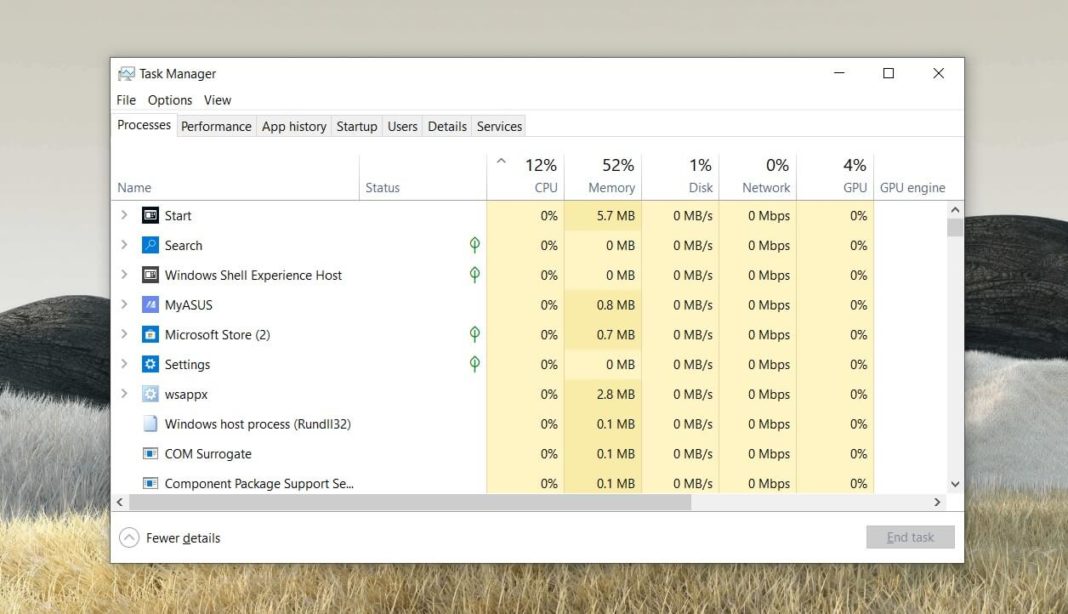

- #Bring task manager back from process explorer how to
- #Bring task manager back from process explorer mac
- #Bring task manager back from process explorer windows
It also shows you the exact percentages of power they are consuming and how long each app has been running. This means you can see what’s consuming the most of your Mac's CPU power. The apps and processes appear even if running in the background, making it easy to spot unusual activity.īy default, the Activity Monitor opens on the CPU tab. When you open the Activity Monitor, you’ll be able to see all of the applications currently running on your Mac.
#Bring task manager back from process explorer how to
If you decide to use Activity Monitor as your task manager on Mac, you should learn how to work with its monitor indicators.
#Bring task manager back from process explorer mac
How to use Activity Monitor on a Mac - How to use Mac Task Manager If an application is frozen and not responding, its name will be highlighted in red. Here, simply select the app you want to close and click on the blue button in the corner. Press the ⌘-Option-Esc shortcut on your Mac to bring up the Force Quit utility.

#Bring task manager back from process explorer windows
However, you can use a shortcut to force quit applications, which is one of the things the Task Manager in Windows is capable of. Sadly, there’s no direct shortcut to open the Task Manager on a Mac. What is the Control-Alt-Delete shortcut for Mac? You can launch Task Manager mac like any other program.Note: "Keep in Dock" should now have a checkmark beside it, which means it will stay in the Dock even if you quit the app. Right-click on the Activity Monitor icon in your Dock.But before you can open Activity Monitor from your Dock, you must first use one of the previous two methods. It's essentially a handy one-click Mac Task Manager shortcut. If you're having recurring troubles, setting up Activity Monitor in your Dock is something worth doing. Double-click on the Activity Monitor icon.Use the Spotlight utility ( ⌘-Spacebar ) to locate and launch the Activity Monitor quickly.Type Activity Monitor into the search field or Navigate to Applications in the sidebar and choose Utilities in the Applications window.Go to your Launchpad (the rocket icon in your Dock) or Click on Finder in your Dock.Once Activity Monitor comes up highlighted, hit Enter or click on it.Press Command + Space to open Spotlight.Pick one of the three ways to do it: Open Activity Monitor from Spotlight: Launching Activity Monitor (Task Manager Mac) is still quite simple.

So, how exactly do you open the Activity Monitor - the Mac equivalent of the Task Manager - if there’s no shortcut or Dock option? This feature is missing from Mac, as right-clicking on the Dock only brings up some settings. Most Windows users know you can quickly fire up the Task Manager by right-clicking on the taskbar. How to open the Task Manager on Mac - Task Manager macOS This utility shows how much memory your Mac processes are using and which apps are currently active (even if they aren't open), letting you force quit stalled ones if you can't close them the usual way. If you've never used the task manager in Mac before, it can be quite a lot to take in. What is Activity Monitor in Mac?Īctivity Monitor in Mac is basically the equivalent of Windows Task Manager. This will open a window containing a list of all currently opened programs and applications that are running in the background. To open it, simultaneously press down the + + keys on your keyboard. The Mac Task Manager is a mini-version of the Activity Monitor. If you’re lost and want to know where to find this tool and how to use it on Mac, this article is here to help. It delivers on the same premise but operates in a slightly different way. On macOS X, this tool is called the Activity Monitor. However, the classic “ Ctrl-Alt-Del ” shortcut doesn’t work on a Mac. It’s almost a knee-jerk reaction to open it as soon as you suspect something is wrong. With the Task Manager, you can force quit apps (known as the “End Task” option on Windows) and see various consumption details.Ĭoming from Windows, I know that the Task Manager is an essential tool to identify issues or force quit apps. It’s a useful tool on Windows that allows you to see a plethora of information at once. One frequent thing new Mac users seem to look for is the Task Manager. Everything you know and love from Windows can be found on a Mac under a different name. Don't be afraid if you’re in the same shoes as I was.

Making the change wasn’t easy, as many things are different on the macOS X system than any Windows I’ve seen before. Before I started using a Macbook, I was always a Windows user.


 0 kommentar(er)
0 kommentar(er)
